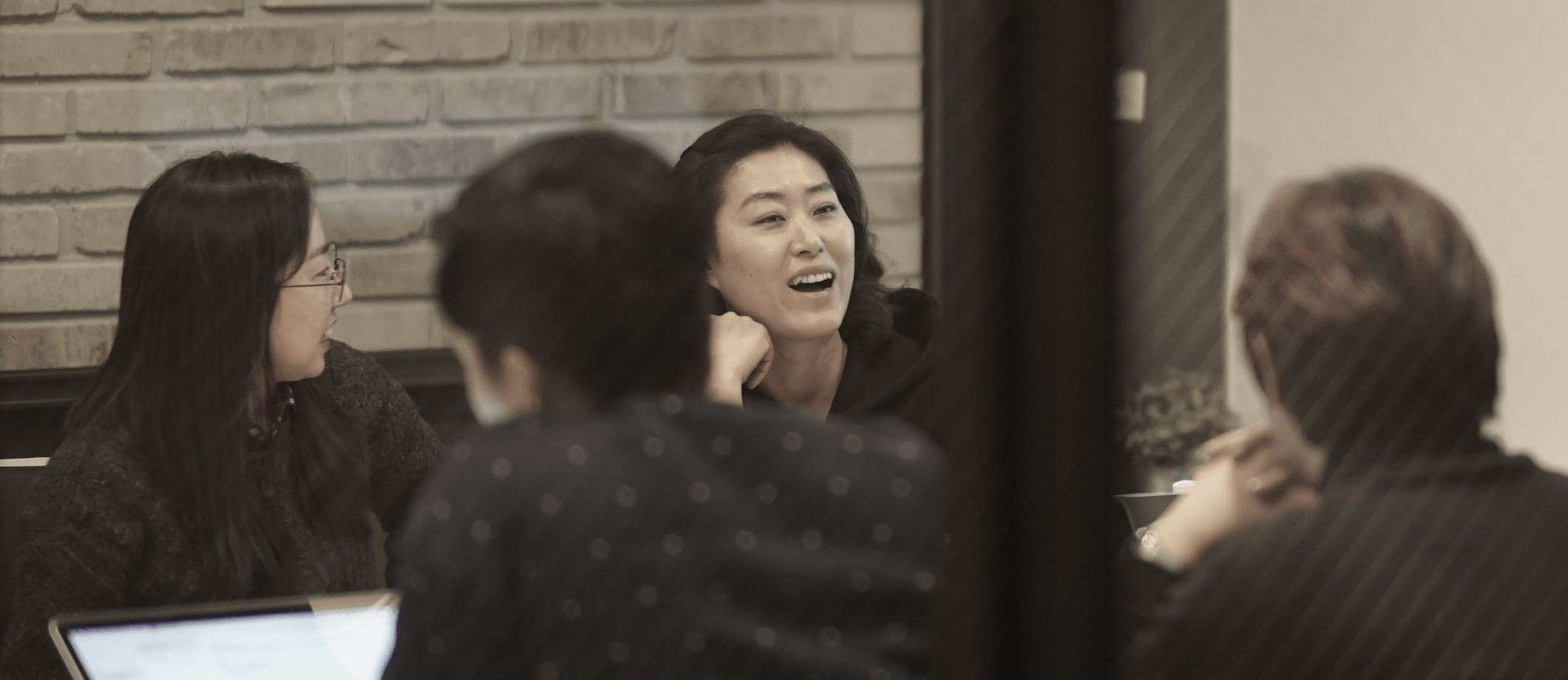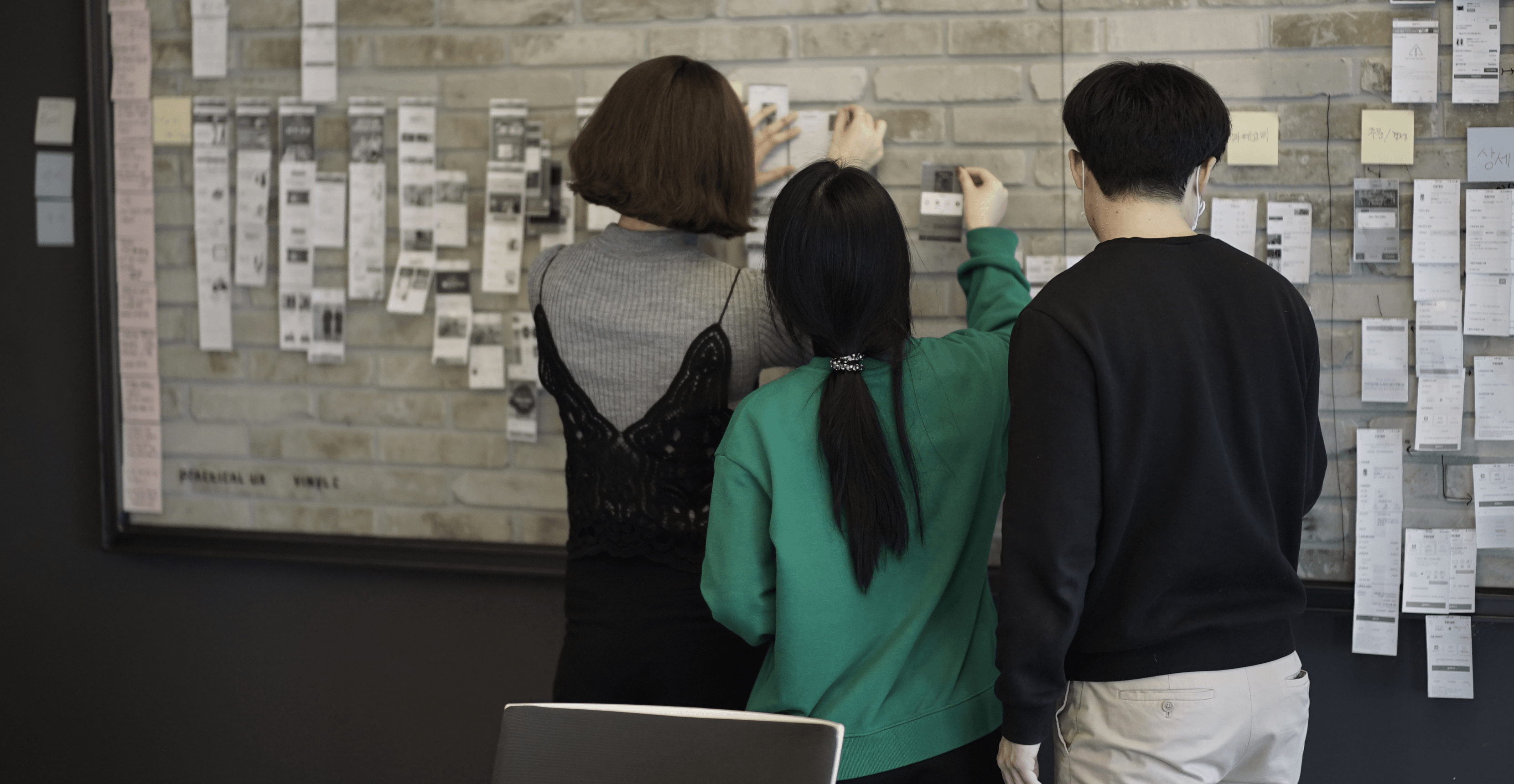
In fact, is collaboration in Lean UX more effective than a star player’s creativity? VinylC has applied the Lean UX process and methodology in the proposal suggest, and one questions has been consistently raised in this process. Due to the nature of a proposal, it is critical to fine a special solution, but would it be possible to get that though the collaborative design in the Lean UX?
Mr. Myeongjun from VinylC: The direction of the UX, deducted from the UX goal session and brainstorming session, does not seem to be so unique. Due to the nature of a proposal, we are supposed to come up with something special, and the deducted direction is for improvement, and not so special. I think that the Lean UX focuses on the completion of each stage rather than enhancing the quality, so wouldn’t it be better to have a competent keyman to present the UX direction and draw a wireframe based on it?
Mr. Shin from VinylC: That’s true. Each one has a different idea about the UX direction and it might not be suitable to make such decision in the democratic manner. Also, the insufficient time to have an analysis and think deeply at the beginning of the stage might be attributable to the improper outcome of the Lean UX process.
Mr. Jihun from VinylC: I agree with both of you. What you have pointed out are the issues that have been raised in other LEAN UX cases. However, due to the nature of Lean UX, the first MVP is not aiming for perfect quality, but for revealing the issues to be rectified. In other words, it is aimed to reveal the issues to be corrected through the user verification so it should be considered differently from the existing design methods.
Mr. Seungkwon from VinylC: One of the things that have been chanced with the introduction of the Lean UX is that every member understands a common goal in a short period of time and actively involves in each process. If one person suggests a direction, people might not follow it completely. However, I also agree with the opinions that we need more time to analyze at the beginning and a democratic opinion might not be a perfect solution.

How do you feel about our meeting? Everyone has a lot to say. When you talk a lot, you sure need something sweet.

At the meeting, there are many issues, including the appropriateness of a democratic decision-making process, the quality of outputs, and the insufficient time for analysis, but the most significant issue is to decide whether to pursue collaboration? or a keyman's directing?
In fact, in many meetings, people of higher positions talk mostly and the rest only listen. In situations where only a short period of time is given but a high-quality outcome is required, it might be more efficient. Sometimes, it might be better to have one person sorting out ideas than having various ideas from many.
It has a negative aspect as well since members other than the keyman would get less involved and have poor understanding, and the outcome might not be so satisfactory. People tend to become more passive and if the keyman leaves the company, then we have no answer.
On the other hand, a collaborative meeting allows even members of lower rank to actively participate in. The meeting can be more natural and enjoyable. Sometimes, new and novel ideas can be created. Once an organization gets used to this culture, the competitiveness of the company no longer relies on a single person’s competence, but its collaboration culture.

However, this collaborative methodology could face with the aforementioned limitations. Then, what would be proper?
I think the collaboration would be proper, but it should induce ‘synergy’ rather than ‘downward equalization’. For this, collaboration skills are important. In other words, we have to collaborate in the proper manner. Therefore, it would be important to have the proper collaboration culture as well as specialized facilitation competences. I recently had a chance to attend the seminar presented by Coopersilitation, a facilitation company, and the main subject of the seminar was this.
"When we do a project, the goal of the project is not to derive a strategy, but to create an output through execution, not an output, but an outcome." Starting a project with an insight strategy from an executive will initially be a high level of the project, but the low level of ownership and understanding of the member to execute it will result in lower levels of output and lower performance at the execution stage.
Conversely, when you collaborate, even if it looks a little lower at first, the power of your participation changes and increases as you go to the performance phase. The philosophy of percylation is that you believe in people. Otherwise, collaboration cannot be achieved. We believe this"

A project made with specialized collaboration competences than a simple democratic decision making process. Choosing a long-term/final-goal perspective rather than a short-term perspective. That’s what would be needed in every project in the near future. What do you think?
- Nah Ji-Hoon, Service Design Group, Service Creative Business Division, VinylC